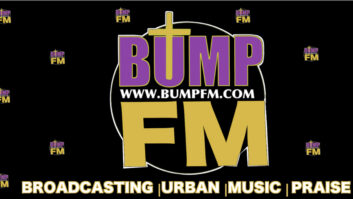In the current LPFM filing window, RW reader and contributor Dan Slentz has applied for a license in a small community in Ohio. We asked him to share his thoughts about his process in doing so. Slentz has experience in this area; he filed two applications in the earlier window, which both were awarded. One licensee backed out but the other became WNHS(LP) in Newcomerstown, Ohio.
The author’s day job is associate director of video at New World Symphony and contract broadcast engineer. Opinions are his own.
It’s extremely easy to figure everything out, especially if there is a clear, open frequency (no second channel adjacency issue). I recently worked on one for Miami Beach and found that a particular location allowed one LPFM. I’ve found people charging between $1,200 and $3,500 to file for applications. The hardest part is gathering the data. You do need to have a proposed transmitter location. A few parts of the process are open to interpretation (even WITH the FCC’s helping document, which pretty clearly spells out almost everything).
Here are the CliffsNotes:
You must be a nonprofit to file. Provide certifications, licenses, state certificates to prove your nonprofit status. Boards of nonprofits should be local. I asked each member of ours to sign a notarized affidavit stating their age, where they live (locally), how long they’ve lived in that local address and how many years they’ve been local residents.
Have a mission statement (the FCC loves “educational missions”). Be clear and concise. Also have a programming statement. They want a real local presence and not (as some have done) a satellite receiving some preacher eight states away. You need to be able to state you are going to be on the air and local for eight hours per day every day, unless you’re a school, in which they’ll “forgive” an absence of weekends and holidays. Also, a little “confusion” thrown in about what constitutes “local.” A local automation system can keep a station on the air 24/7/365. This has been mentioned as “not local” by the FCC, yet I don’t see anything written that clearly prohibits this.
You need a latitude/longitude (location) secured so you can be sure a frequency fits in. Also you have a little bit of a “watch” over RF exposure, but this is pretty easy to do since we’re talking about 100 watts. Including the FCC’s own website, there are a few places (from the non-profit organizations to equipment manufacturers) which really help in determining your location and coverage. What you need to know is: center of antenna radiation above nearest object (whether ground based on being on a tower built from ground up, or from rooftop if your antenna/tower sit on a roof); and antenna center of radiation above average terrain. What really throws things off a little is if your transmitter site sits in a valley. Then “average terrain” includes the hills all around you. In this case it is very easy to show a HAAT (Height Above Average Terrain) of a negative number (-4M, etc.).
Online help via websites is needed to make some decisions (see links below). The online assistance is so excellent via web resources that it greatly simplifies the entire process. You may need online self-help assistance for some of the following:
– First and foremost, can a frequency be placed in an area? The FCC’s own site shows a very “forgiving” map of the whole nation (and includes where second or third channel adjacency wavers are needed). With only the largest few metros, the whole country looks like you could put an LPFM about anywhere. Non-LPFM possibilities were shaded as “white” and included Los Angeles, Denver, New York City and a few other majors. Even some of the largest suburbs (by the FCC’s own website) looked possible, though in reality, it’s extremely difficult to prove you wouldn’t interfere.
– Determining a street address and how it converts to latitude and longitude.
– Conversion of latitude and longitude (NAD27 vs. NAD83). Frequently you’ll see coordinates displayed one way as NAD83, but the FCC wants the coordinates filed in NAD27 form (simply put, a particular “format”).
– Terrain elevation.
For the “bonus points” of the process, your group needs to show it has existed for more than two years and has an educational mission. I’ve been sure to clearly show that my board is minority-run.
If people who apply use common sense, they can do this. Saying goofy stuff like “the radical minority need a voice in the community” will pretty much waste yours and the FCC’s time on the whole thing.
The biggest concern to me are the many online comments I’ve read from people wanting to start LPFMs. I’ve actually seen questions like: “Can I put my MP3 player at the transmitter site and just use that as a radio automation system?” What?! So many times you get this type of vibe: “My friends say I have the best music on my MP3 player and no one plays the music I like, so I figured it was a time for a Bluegrass-Jazz-Acid Rock fusion station playing groups that aren’t mainstream like the Meathead Puppets of Mastery, and the Wizbangers from Uhrichsville, Ohio (since they have a fan base with nearly 30 people and growing every day)!”
Good Lord! I read these types of posts and wonder if people even understand the concept of broadcasting. If you want to “narrowcast,” go out and buy 30 each $15 MP3 players, program them and pass them out to all 30 people (or less) who want to actually hear your stupid Bluegrass-Jazz-Acid Rock fusion “radio station.”
The “diehard” LPFMers seem to say it’s a person’s right to program whatever they want, but I differ. I can see a need to fill a void, but if that void is so small that you are using a limited resource (spectrum) for .003% of an area’s population, why are you wasting the spectrum?! But hey, that’s just me.
As for the nonprofit group I formed, it probably took me about 16 hours of work to create everything, form the non-profit, get a location (donated) from a start of nothing. Filling out the online construction permit (CP) with everything in hand (and double and triple checking) took maybe two hours.
I feel pretty confident about the LPFM I filed for this time. I’ve had a few people ask me to help them at the last minute. As it turns out, the federal “shutdown” and delay on the window have prompted some people to go after an LPFM at the last minute.
I’ve told a few people who have solicited help that I would do so for a small fee, but it really is so easy that I encourage people to do it on their own. There are great resources out there, including free online Langley-Rice maps for pretty decent reflection of coverage.
Some useful web links:
Available Frequencies:
http://www.fcc.gov/encyclopedia/low-power-fm-lpfm-channel-finder
http://mylpfm.com/
http://www.prometheusradio.org/preparing_finding_channel
http://home.recnet.com/lpfm
http://radiospark.org/rfree
Latitude & Longitude Locating/Maps:
http://geocoder.us/
http://www.latlong.net/
http://batchgeo.com/
http://google.com/maps
Elevation:
http://viewer.nationalmap.gov/viewer/
Longley-Rice modeling (terrain coverage):
http://www.nautel.com/tag/rf-toolkit/
Metric conversion:
http://www.google.com/search?client=safari&rls=en&q=foot+to+meter+conversion&ie=UTF-8&oe=UTF-8
http://stevemorse.org/jcal/latlon.php
NAD83 to NAD27 Converter:
http://www.ngs.noaa.gov/cgi-bin/nadcon.prl
RW welcomes other points of view. Comment below or email [email protected].









